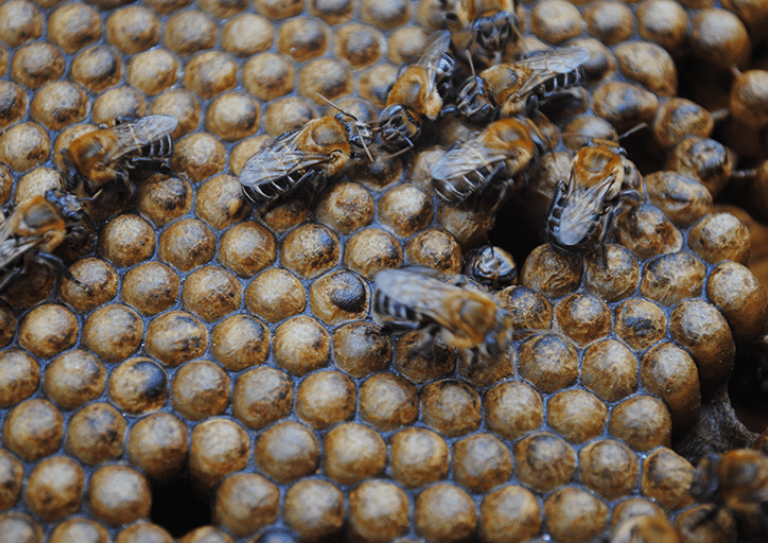Breadcrumb
Effects of Cinnamoyloxy-Mammeisin from Geopropolis on Osteoclast Differentiation and Porphyromonas gingivalis-Induced Periodontitis
What is it?
Geopropolis is a substance that certain kinds of bees make from wax, dirt and floral resins to seal and protect their hives. Some indigenous groups have long used it for medicinal purposes. Cinnamoyloxy-mammeisin (CNM) is an anti-inflammatory compound in geopropolis.
What problem does it aim to solve?
Bone remodeling is a continuous process; in a healthy individual, bone is constantly being replaced. Bone loss is a serious health concern. When the balance of osteoblasts (bone builders) and osteoclasts (bone destroyers) goes awry, bone damage and breakage becomes more likely, whether in the legs or the jaw. Osteonecrosis in the jaw in particular is a concern for oral health practitioners. Researchers wanted to find out if CNM had any effects on particular aspects of the bone remodeling process and on osteoclasts in particular.
How does it work?
Researchers tested the effects of CNM in the laboratory (in vitro) and also in mice (in vivo) to see if it would reduce the formation and activity of osteoclasts. In the in-vitro experiments, CNM decreased the amount of osteoclasts created and also reduced their bone resorption. In the experiments with the mice, which were infected with the periodontal pathogen Porphyromonas gingivalis, the mice who were given CNM showed less bone loss and reduced osteoclast activity.
What are the real-world implications?
This is potentially a new therapeutic strategy to treat disorders related to bone loss.
What are the next steps?
More research could help uncover the mechanisms behind the effects of CNM, and also investigate whether a CNM-based treatment could be effective in human patients.

Melipona scutellaris, a stingless bee which produces a substance called geopropolis to seal its hive. Geopropolis contains a compound with antiinflammatory properties. Photo credit: Cícero R. C. Omena.
Source
"Effects of Cinnamoyloxy-Mammeisin from Geopropolis on Osteoclast Differentiation and Porphyromonas Gingivalis-Induced Periodontitis", Journal of Natural Products 2017 80 (6), 1893-1899 DOI: 10.1021/acs.jnatprod.7b00194
Authors
Marcos Guilherme da Cunha, Department of Physiological Sciences, Piracicaba Dental School, University of Campinas and Molecular Targets Laboratory, National Cancer Institute, National Institutes of Health
Erivan Schnaider Ramos-Junior, Department of Biomedical Science, University of the Pacific-Arthur A. Dugoni School of Dentistry; and previously at Department of Physics and Chemistry, School of Pharmaceutical Sciences of Ribeirão Preto, University of São Paulo
Thaise Mayumi Taira, Department of Physics and Chemistry, School of Pharmaceutical Sciences of Ribeirão Preto, University of São Paulo
John A. Beutler, Molecular Targets Laboratory, National Cancer Institute, National Institutes of Health
Gilson Cesar Nobre Franco, Department of General Biology, Laboratory of Physiology and Pathophysiology, State University of Ponta Grossa
Masaharu Ikegaki, College of Pharmaceutical Sciences, Federal University of Alfenas
Severino Matias de Alencar, Department of Agri-Food Industry, Food and Nutrition, "Luiz de Queiroz" College of Agriculture, University of São Paulo
Sandra Yasuyo Fukada, Department of Physics and Chemistry, School of Pharmaceutical Sciences of Ribeirão Preto, University of São
Paulo Pedro Luiz Rosalen, Department of Physiological Sciences, Piracicaba Dental School, University of Campinas






